If you’ve got a lightweight bike and want to electrify it, the BionX PL 250 is one of your best options. This kit works very well for folding bikes and recumbents because of its versatile mounting options. At first glance it may seem expensive, especially compared to other more basic kits, but you get a lot of features and quality with this package. Regenerative braking, pedal assist, locking design, throttle mode and a sophisticated computer set it apart.
The 250 label in the BionX PL 250 M name stands for its 250 watt motor. This is the lowest power kit BionX offers and it complies with European electric bike standards. If you live in America or somewhere that’s less strict, you may feel a sense of regret when comparing it with your friends’ electric bikes or more powerful BionX options like the PL 350. It’s not going to push you up large or even medium sized hills but it does well on the flats. As previously mentioned, this kit is ideal for foldable bikes. You can even find them pre-assembled at some local bike dealers or online retailers like NYCeWheels.
I’ve always wanted to combine this kit with my ultra lightweight carbon roadbike because at just 16 pounds including the computer and battery, it’s possible to create a sub 40lb electric bike and that’s amazing! It would be easy to carry up stairs (except the battery pack on the downtube might get in the way) and it would provide the the same responsive human-powered acceleration and handling I love. Because this kit mounts on the rear wheel, it can be a pain to install but it won’t put your frame under as much stress as if it were on the front fork, as with many other electric bike kits.
You can order the PL250 kit with a 20″, 26″ or 700c sized wheel and the brushless hub motor comes built right in. Generally speaking, 20 inch wheels are the small ones used on folding bikes, 26″ is the standard for most mountain bikes but if you have a “29er” that’s the equivalent of the 700c which is standard for road and city style bikes. Note that if you do have a mountain bike, the rims that came with your frame may be double walled or composed of extra tough materials that the BionX kit doesn’t match.
One of the coolest features this kit offers is regenerative braking which activates as you begin to pull your brake lever. You have to set this system up manually when building the kit and it just uses a little magnet sensor stuck onto the outside of your brake lever which can be delicate. The sensor itself can be positioned for quick activation with the slightest pull on the brakes or only when you pull the brake lever all the way back. Regeneration mode acts like regenerative braking but doesn’t require you to pull the brake lever. You can activate it by using the computer console and setting it to negative mode which has four levels. This is perfect for coasting down large hills or if you’ve just got extra energy and want to pedal the bike manually for part of your ride.
There are two computer consoles available for this kit and you might see both when shopping around. The the G1 or “generation 1” console is smaller, more simple and actually integrates the thumb throttle trigger right into the computer display mount. This option provides limited flexibility when mounting and works best right next to the grips so you can reach it easily when riding. If you plan to only use pedal assist mode with this kit, it might not matter so much because you’ll never be pushing the trigger. The G2 option separates the throttle trigger from the computer completely, providing more options when mounting. But, depending on your handlebar size and configuration this could be a challenge to work with as well. It’s designed to fit onto standard sized round handlebars so just double check before you buy, especially if your bike has roadbike or triathlon drop bars that tend to be more oval shaped. The throttle might be impossible to mount anywhere on this type of bar and you might just want to save the cash and go with G1 instead.
Depending on how price sensitive you are, this kit might be just out of reach. Even if you can afford it, it might feel a bit less powerful than desired. It’s a niche offering that works well for smaller bikes, European markets and lightweight setups. The BionX PL 250 puts the battery pack in a good spot for balancing weight but takes up the water bottle eyelets and since it doesn’t come in a rear-mount option like other BionX kits it may not work at all for certain bikes. It’s not easy to configure this kit yourself, especially the regenerative brake setup, and if you’re not comfortable working on your bike to begin with this could be over your head. Overall this is an exciting, proven electric bike conversion kit and one worth considering for smaller, lightweight bikes. It’s high quality meets mid level performance at a low price.
Pros:
- Battery mounts to the mid section of the frame distributing weight more evenly from front to rear of bike, easier to lift bike and mount on car racks
- Battery locks to the frame and can be removed for charging on or off the bike
- Hub motor is brushless and gearless meaning it may have less power going up hills but runs very quietly, coasts without resistance and is more durable
- Offers pedal assist, throttle mode and regenerative braking. Advanced computer system
- Provides some of the longest rides of any ebike conversion kit
- Hub motor comes on the rear wheel exerting force where the bike was designed to take it
- Works with disc brakes
- Uses a torque sensor built into the rear hub vs. pedalec sensor near the crank arms making it easier to instal
- Provides four levels of power assist and four levels of regeneration, easy to use computer
- Complies with European regulations limiting speed to 32 km/h (20 mph) and motor size to 250 watts
Cons:
- Takes up your water bottle mounting eyelets, gets in the way when trying to carry a bike on your shoulder
- Doesn’t come in different color options, can always spray paint it…
- More expensive than other ebike kits but way more advanced
- Throttle and computer may not mount well to road bike handlebar setups
- More challenging to install than other conversion kits because it mounts to the rear wheel and requires swapping the cassette and messing with the brake levers
- Regenerative braking setup is sensitive and more precise to get right
- System requires you to reach 2mph on your own pedaling strength before the throttle will engage, this is designed as a safety feature
- Wires can be long and a pain to deal with, less aesthetically pleasing than wireless or integrated options on complete ebikes
- No lights included, will have to add them separately and cannot integrate with the battery pack unless you’re amazing with electronics and willing to void your warranty
- Wheel may need to be trued after shipment arrives if the package experienced compression
- Kit is only compatible with 135 mm axle size so check your mountain bikes carefully or bikes with thru axles
Resources:
- Official Site: http://ridebionx.com/
- Official FAQ: http://ridebionx.com/services/faq-ebike/
- More Pictures: https://goo.gl/photos/C7c6teNpNVtQt1du6

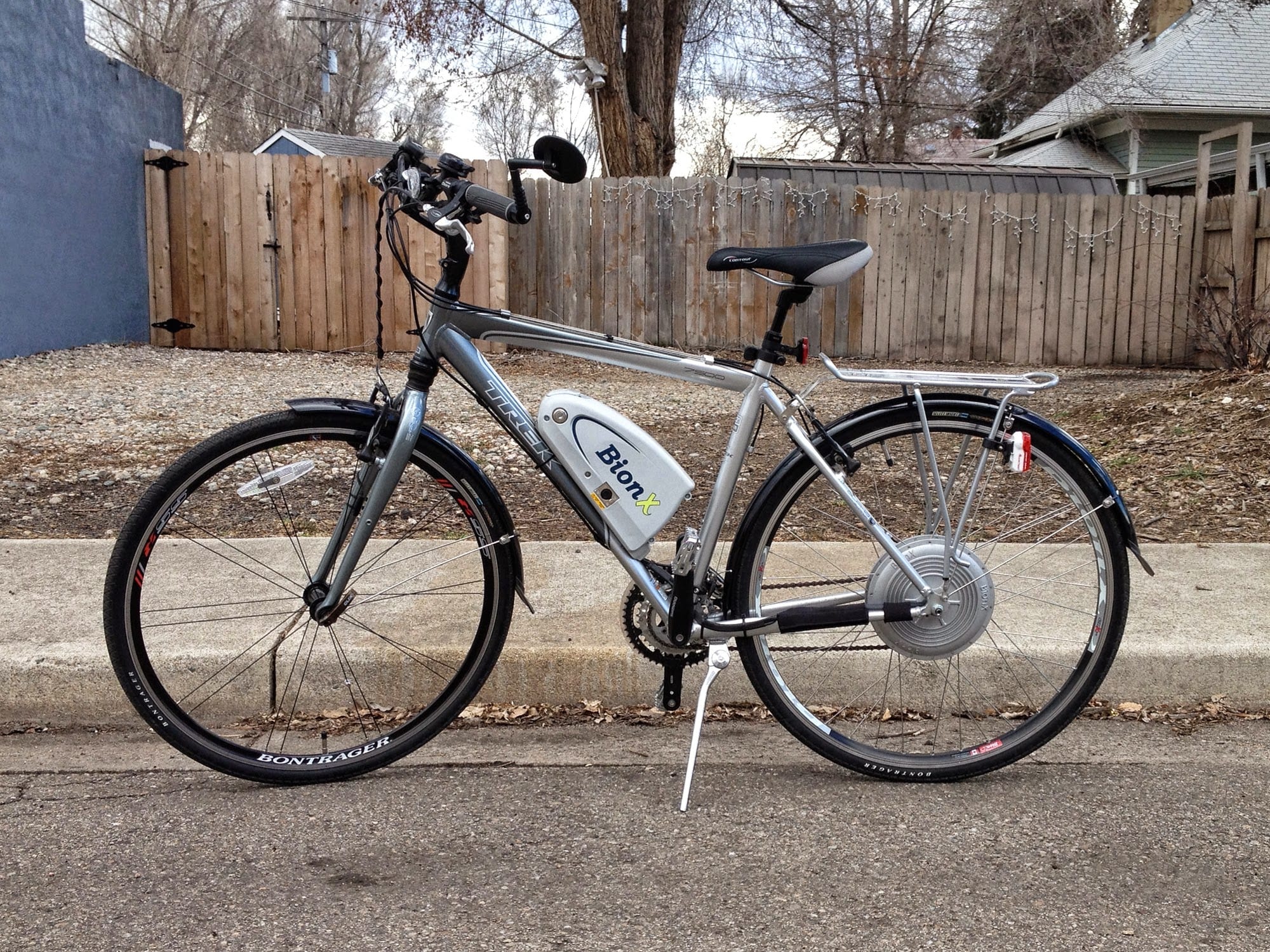
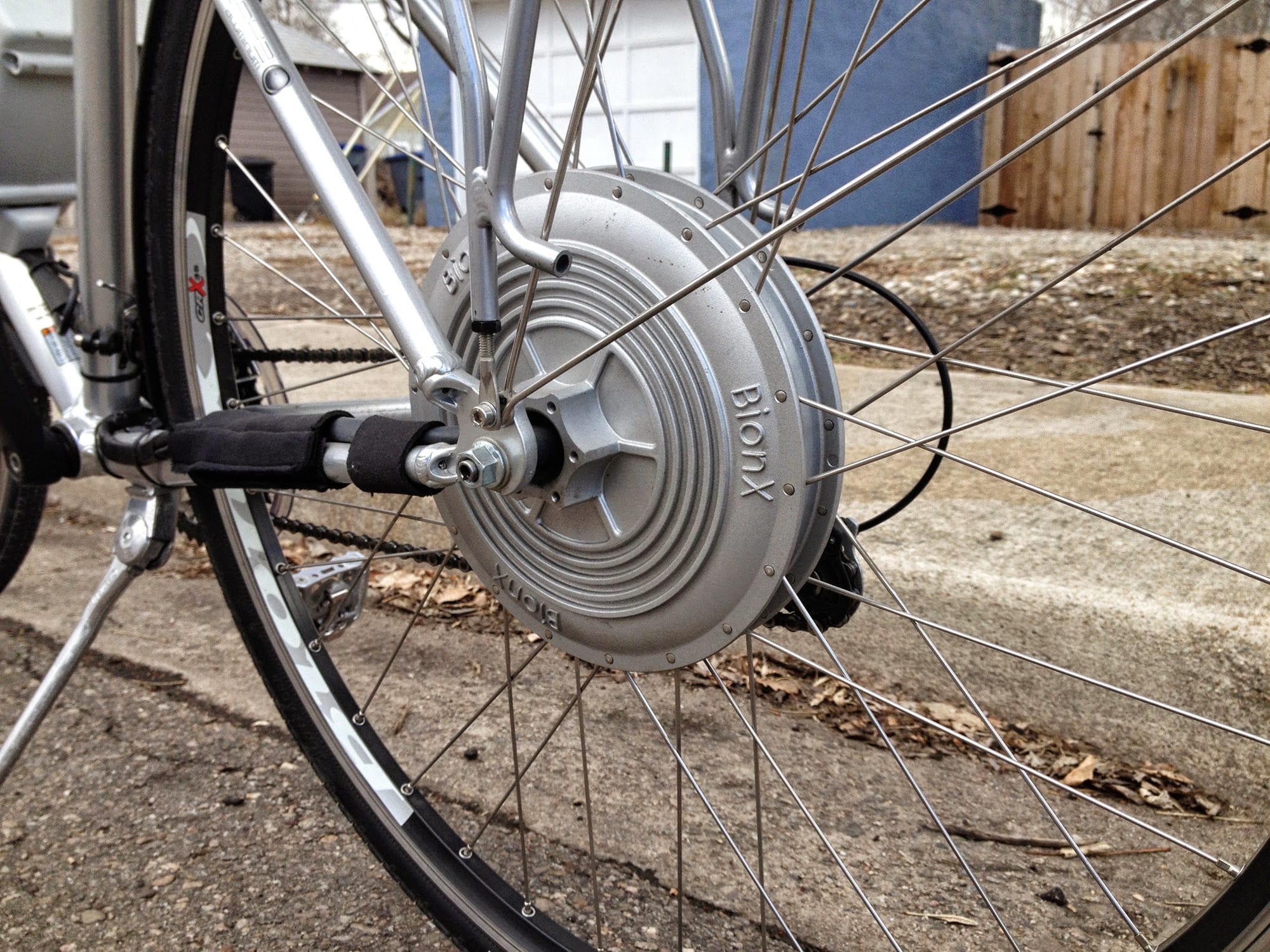
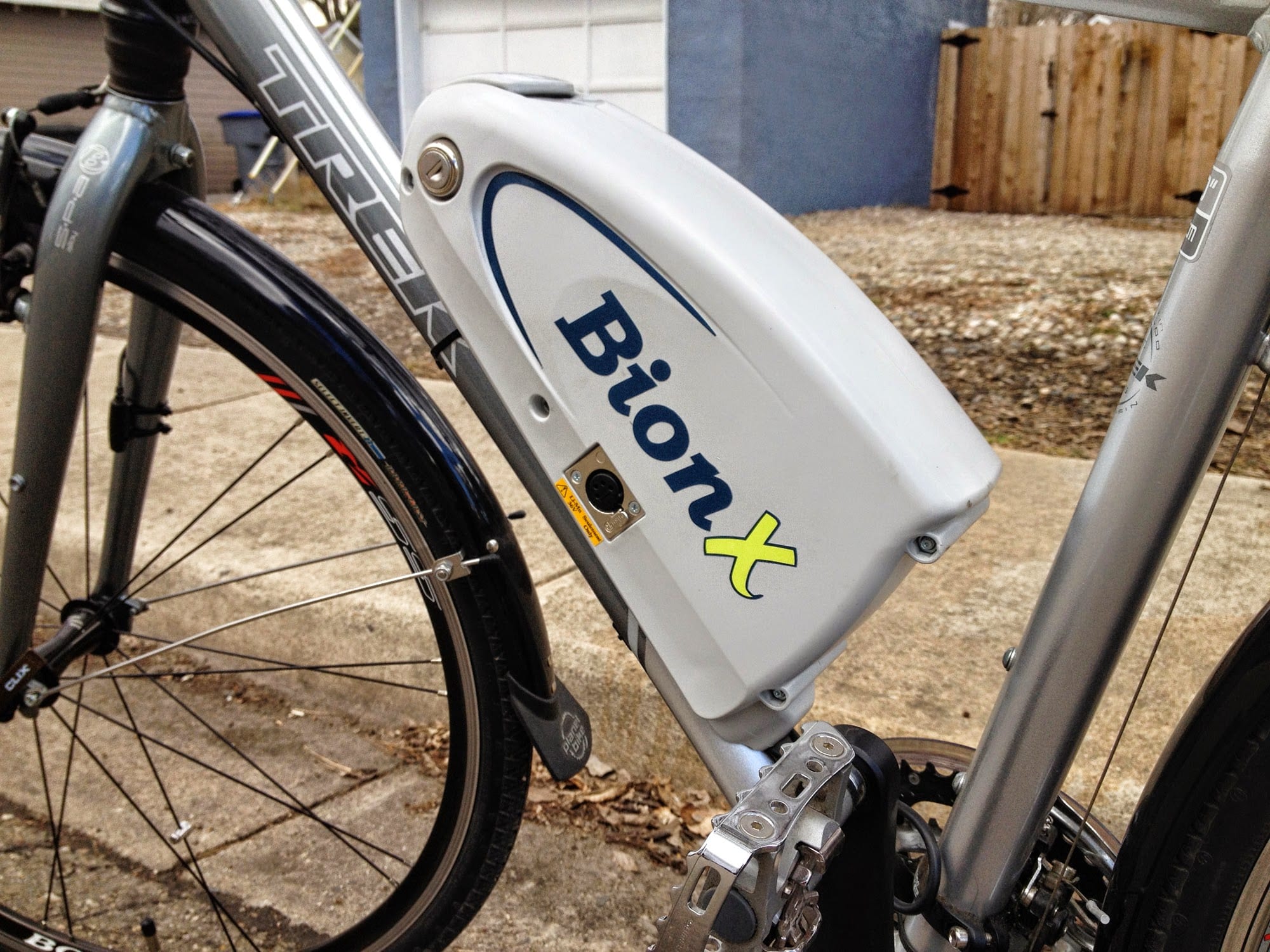

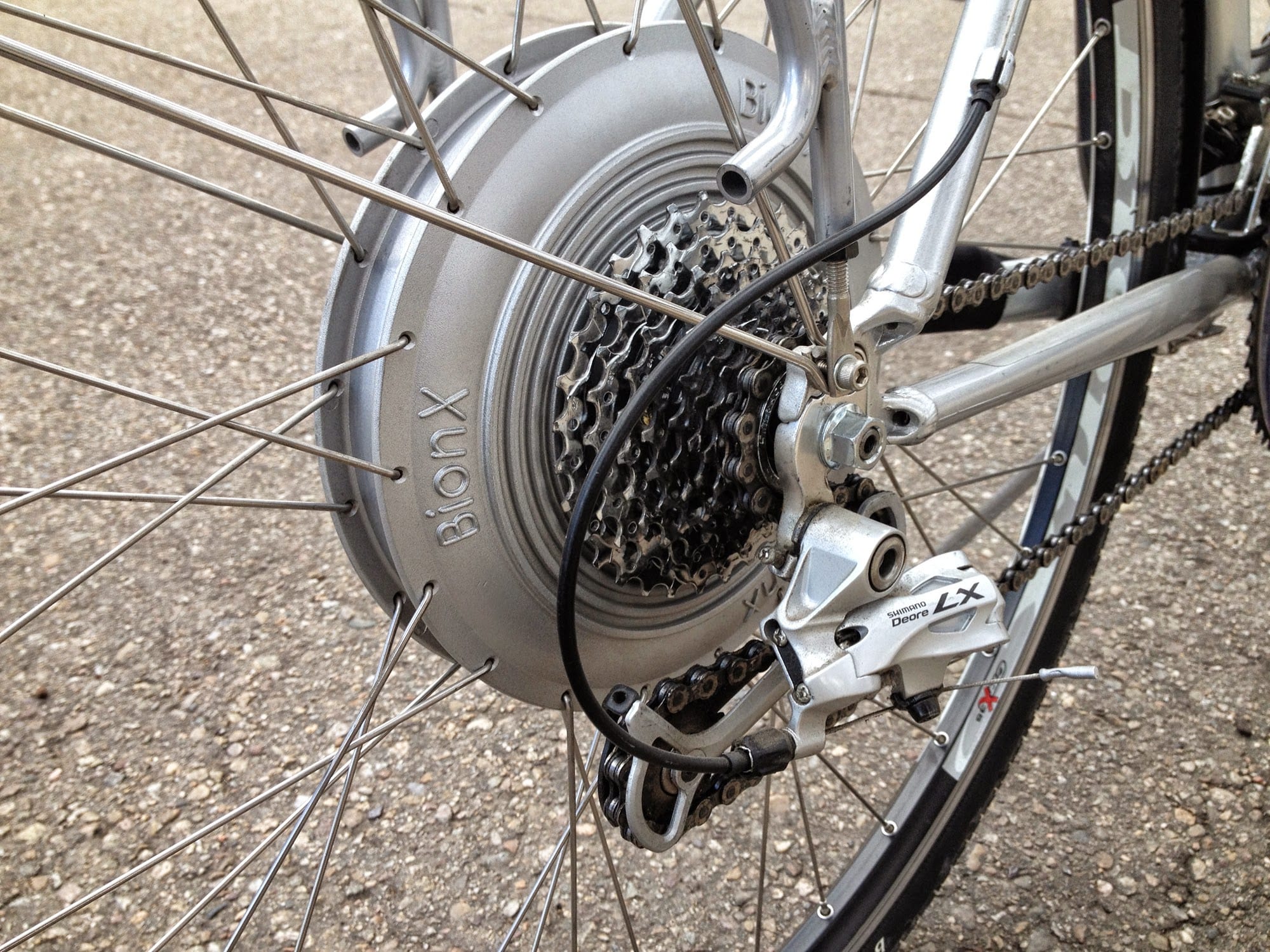
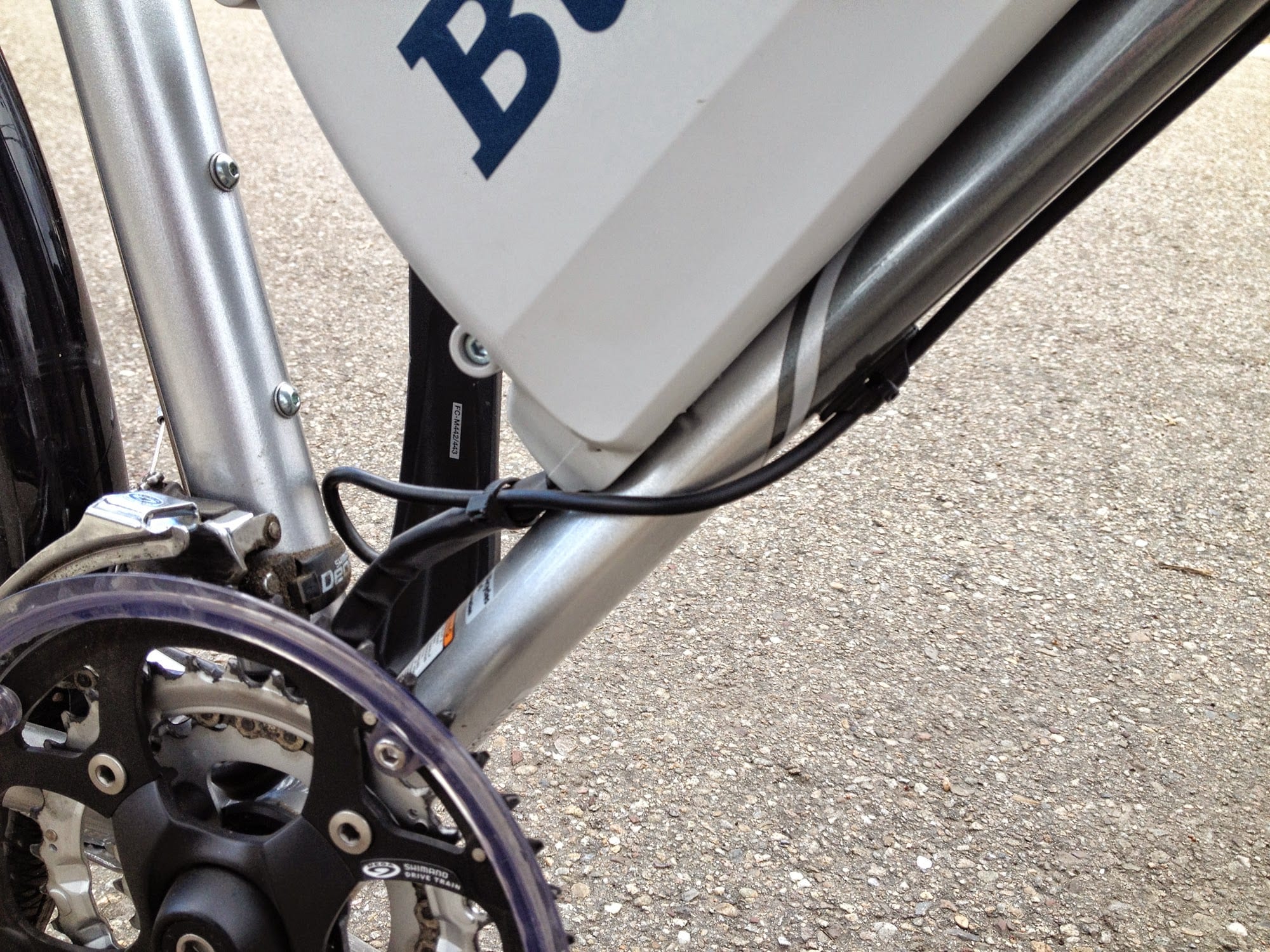

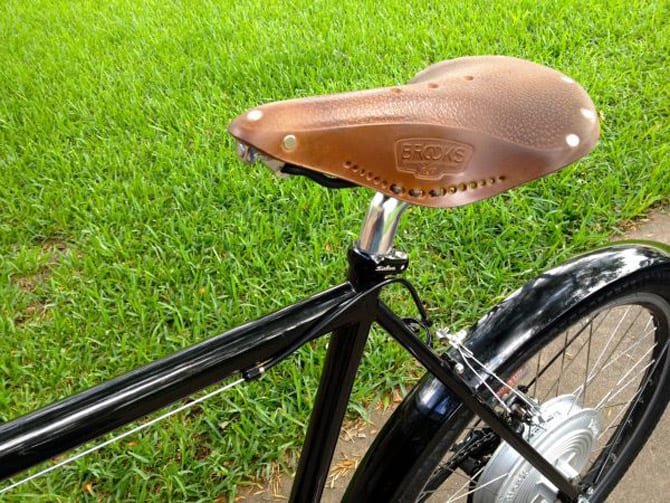



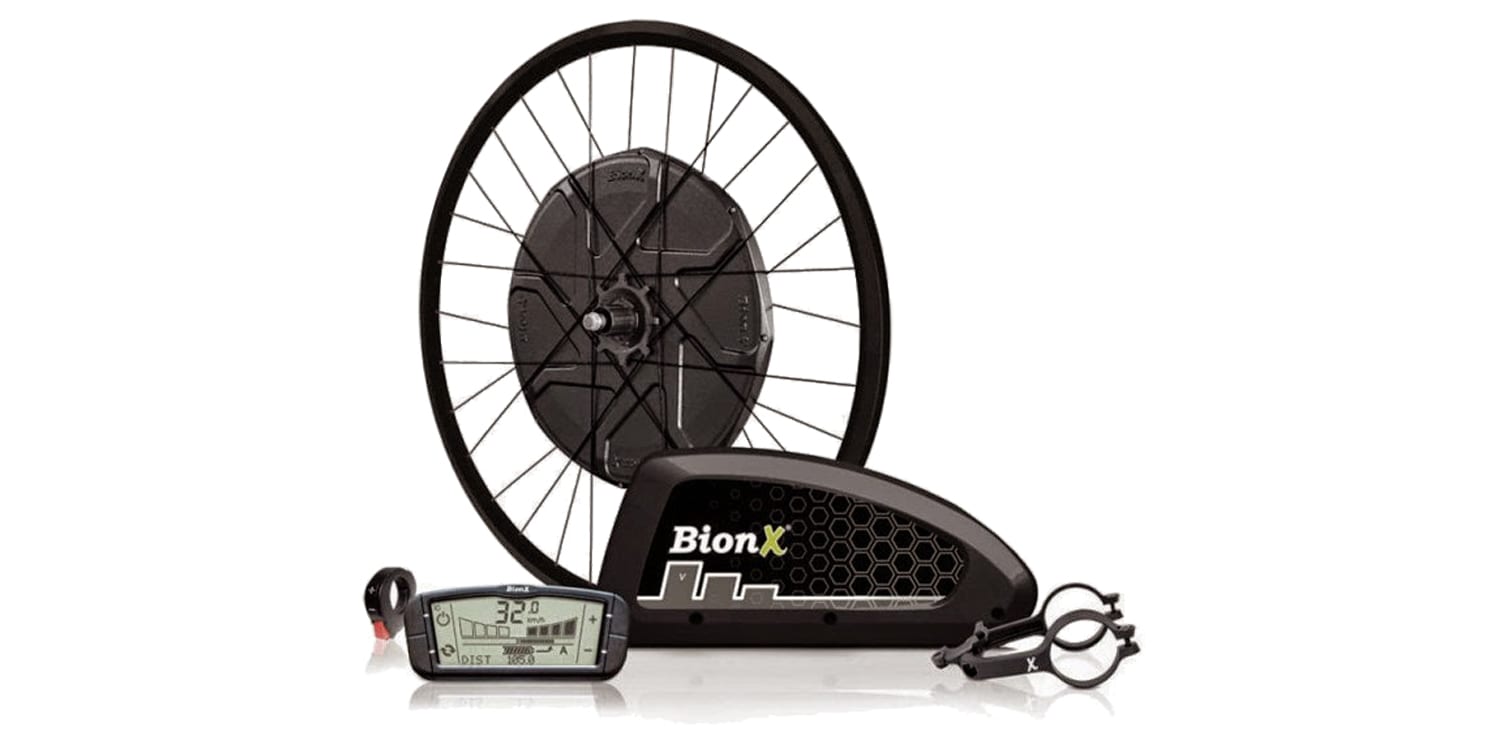
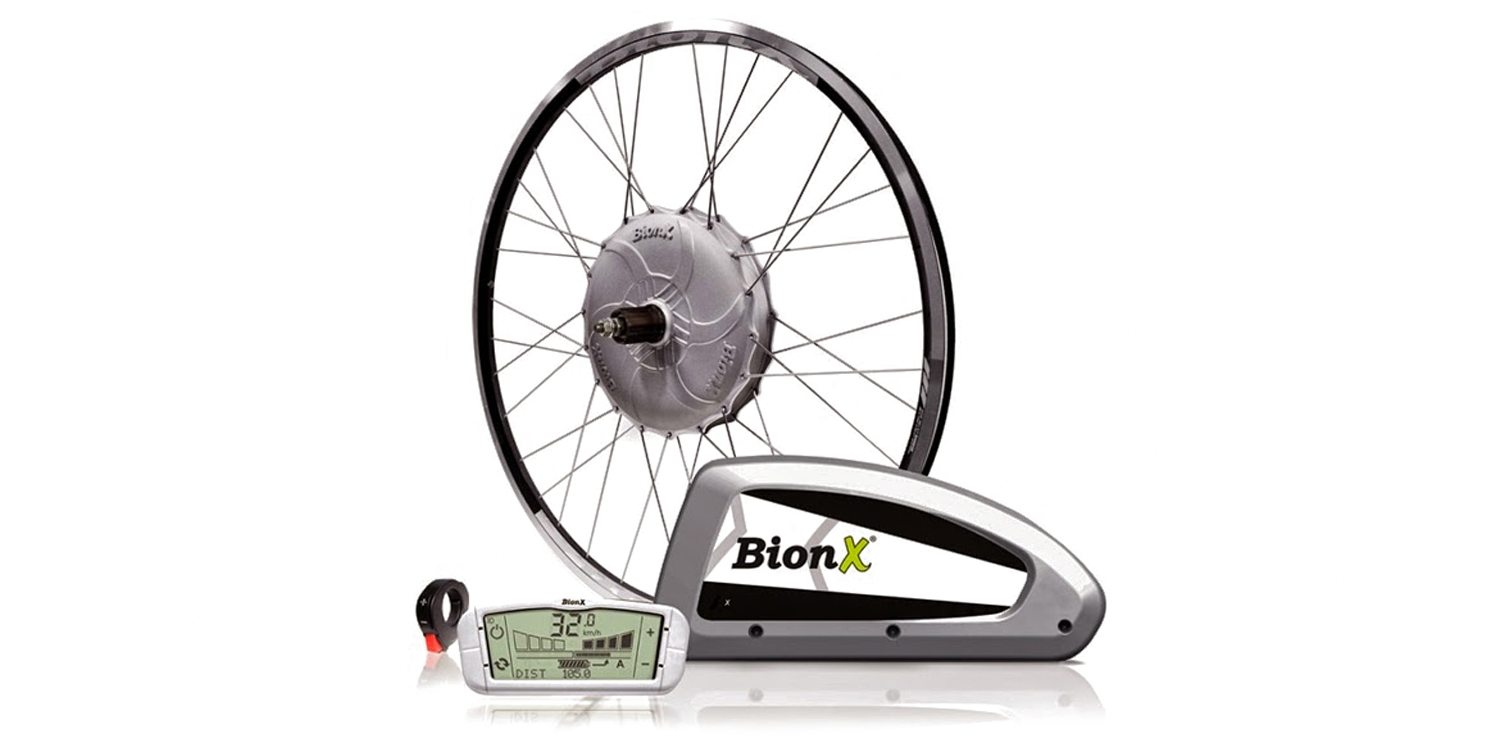
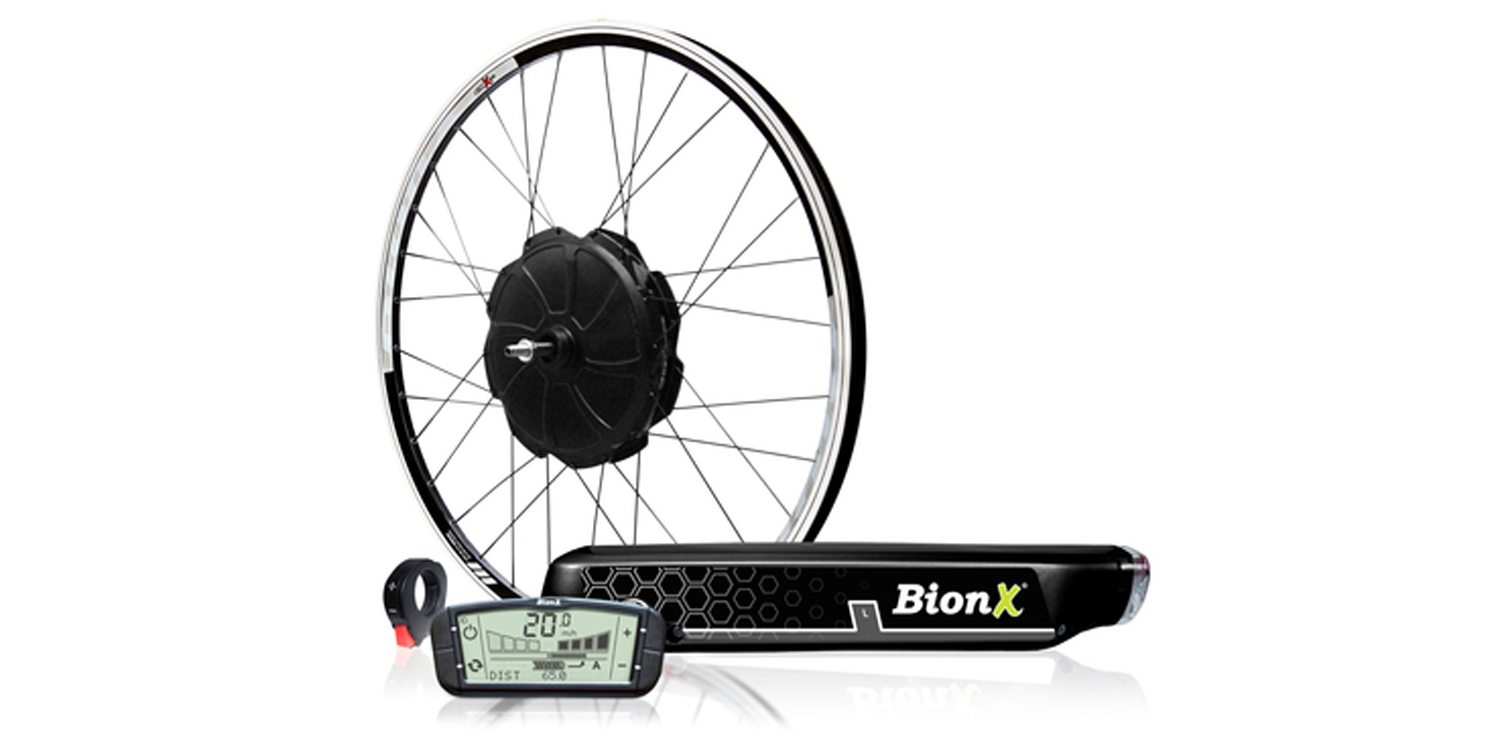
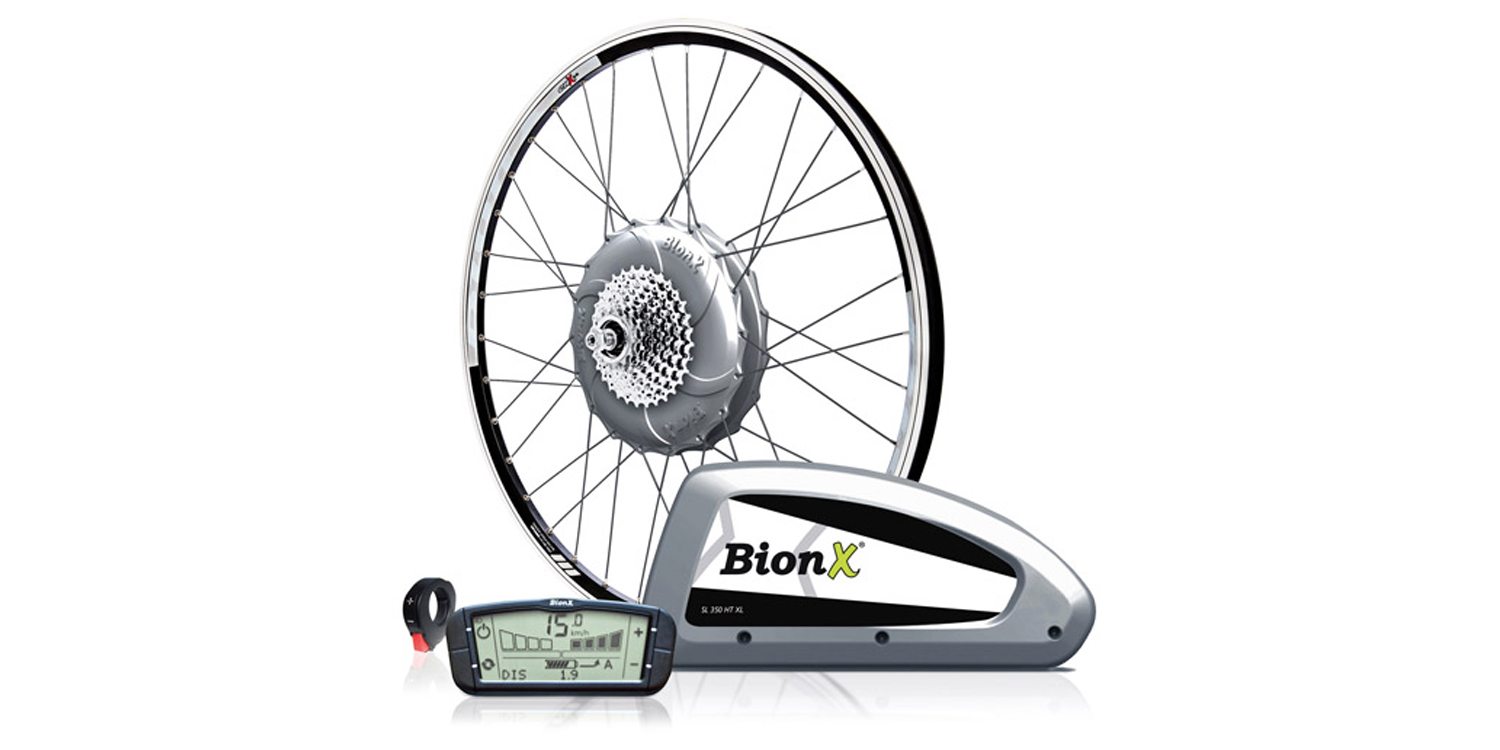
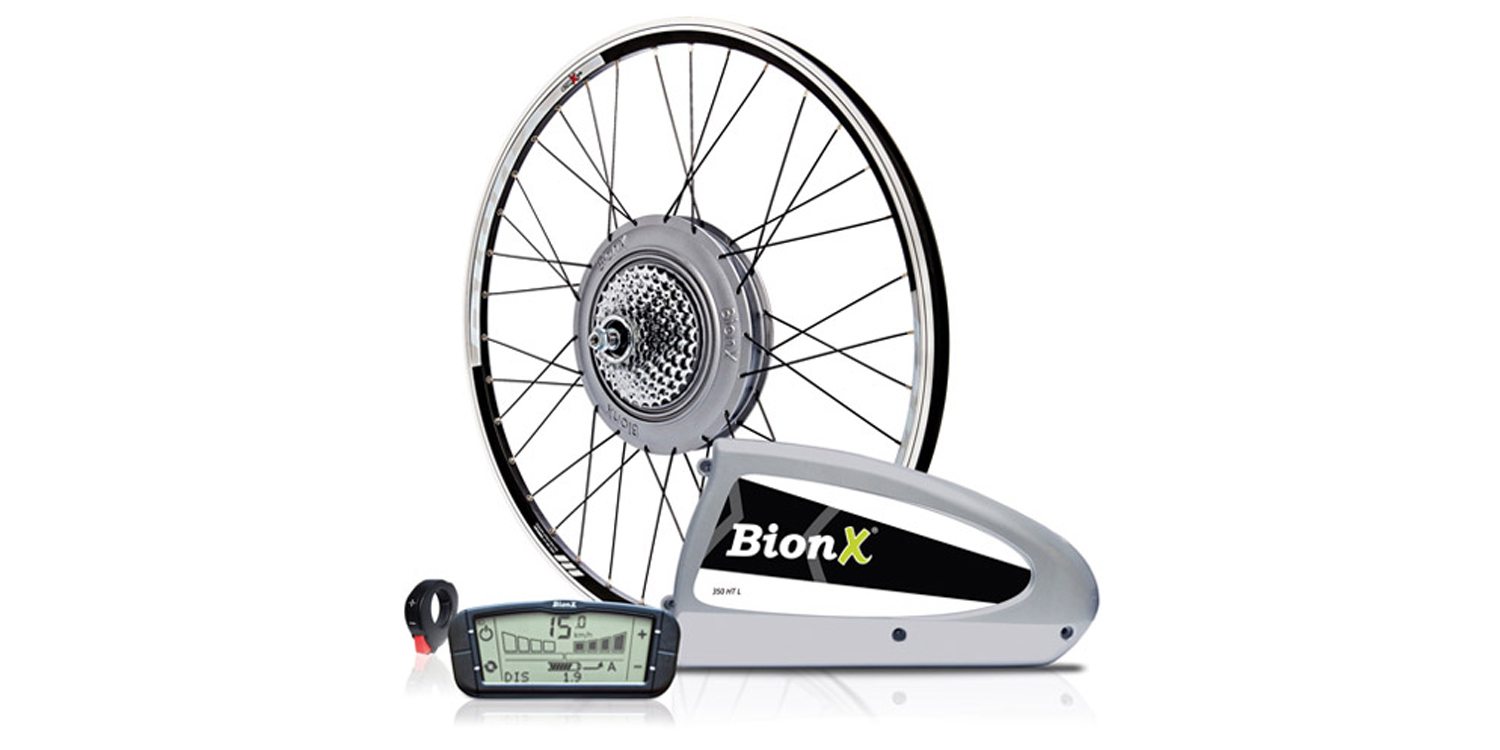
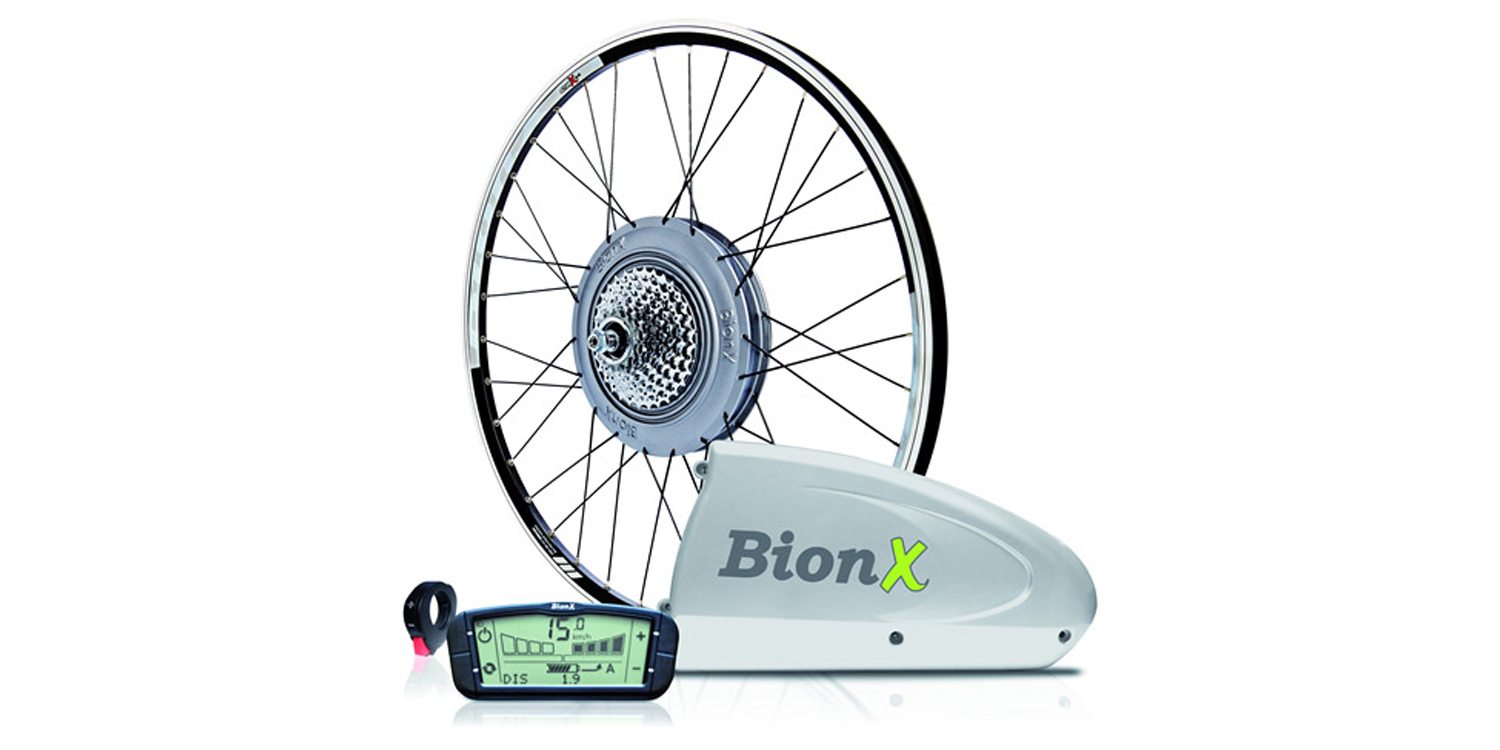
Dan says
I think you did a great job noting the benefits as well as limitations of the Bionx system. I think what I like most about it is it’s amazing pedal assist. I had an El Mundo cargo bike for a little while and I missed the assist greatly. When people ask me what it’s like using the Bionx, I say it’s just like riding a regular bike if I had super strong legs. I commute to work daily and really enjoy the feeling of riding a bike. I liked keeping that feel but also reducing commute time and sweating less in the Texas summers.
I chose the Bionx system after reading up on them at http://nycewheels.com and then testing one at Alien Scooters on South Lamar in Austin. I liked the ease of installation thinking I could transfer the system to another bike later on if I needed to. I also liked having the option of throttle or pedal assist. When I was researching systems I found very few that had both and the ones that did would take some serious mechanical work to mount the pedal sensor on my bike. On the other hand, Bionx systems are easily one of the most expensive available options to retrofit a bike. And they use proprietary components which makes it harder to repair or replace cheaply and easily. I remember reading a review that likened the difference between the Bionx system and other ebike systems to that of the difference between a pc and a mac.
PAUL DEGARIE says
I have over six Years plus 25,000 miles experience with BionX systems. The nicest feature is You can mount the system on a bicycle that fits the rider as opposed the bike the rider must adopt to considering design practicality for fit and use for the owner rider.
PL 250 suitable for most folding, touring, recumbent and road bikes. Wheel sizes 20.24,26 inch and 700cc It can give up and over 25 miles of use on a single charge providing the rider owner understands the system is an assist not exclusively throttle only.
I also have the 24V lion battery and the 22V lion battery. The 24V has more torque and range than the lighter 22V but both systems can exceed 20 miles because of the re-gen feature.
The 22V can go just as far because it is easy to re-gen smaller battery voltage and amps while pedaling. 22V weighs only 6.7 lbs. verses the 24V. 13.3 lbs.
PL 350 good for heaver bikes suitable for 26 and 29 inch wheels can be used on certain mountain ,touring, and tandem bikes suggest with front shock forks. Suitable for heavier riders up to 200 lbs. 36V Re-gen is more difficult because of the battery voltage and amps give more resistance to the rider.
In closing to the cons about installation mostly is location of the G2 consul solution is procure and mount a light bar to the handle bar . Mount towards the rider to protect from head on collisions. Use dielectric grease on all connections.
You can mount battery rail on a generic rear rack locate predrill through holes and mount with spacers. or procure the rectangular rear battery mount from BionX.
I have used stainless steel gear clamps pre-tighten to the profile of the battery rail use either a good vise to squeeze the clamp into the profile mount to a straight tube on the bike frame slide the battery on and off recalibrate fit tighten up gear clamp with battery use red loctight on gear worm drive. Also can use water bottle mount make sure fastener is not fowling with battery rail. I use 5 mm counter fit Philips head stainless steel screws fits flush to the rail not to cause interference with sliding battery on and off usually spacer shims are required.
ART RUPIO says
I ride a 48 v 350 on my cyclocross bike, I ride it with roadies, fast mountainbike riders,and just a suggestion,get a better salesperson than a person that does,nt ride .
and looks like they have never worked out in their life,im trying to get the facts on the 250 for my wife,she rides 150 miles a week and it,s a hard sale trying to convince her watching the video,by the way ,my wife weighs 115lbs and im trying to get her to ride an electric bike